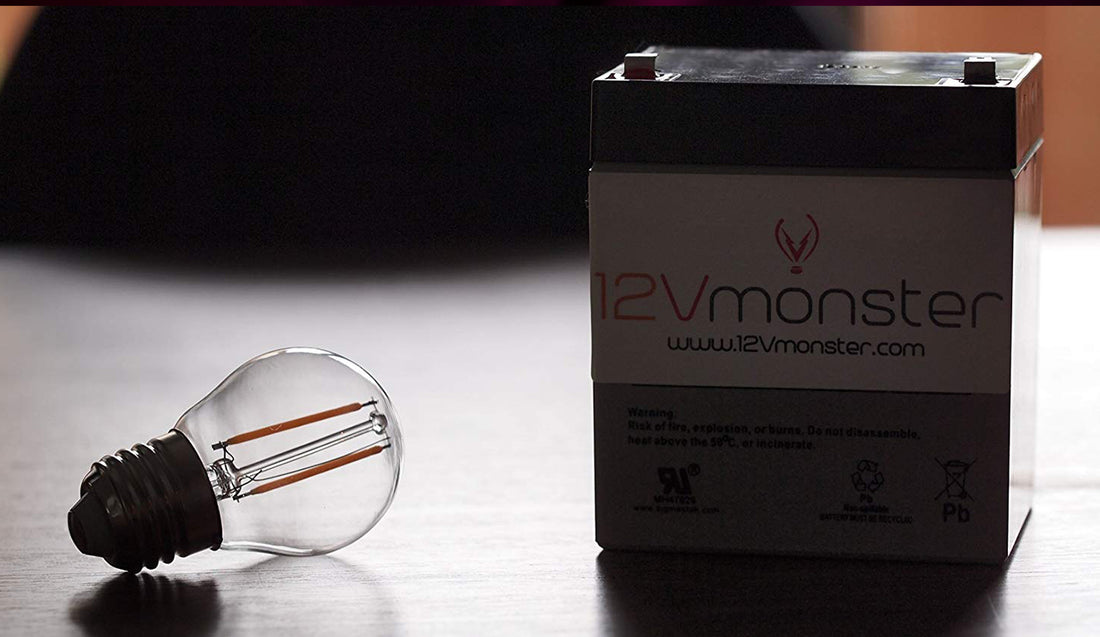In our previous discussions, we have talked about the differences between the AC high-voltage electrical system (line voltage), and its DC low-voltage counterpart, as well as their respective advantages and disadvantages. As an example, you can see our comparison of both systems in a landscape lighting application here.
Today, we will discuss the common applications of DC low-voltage lighting, and why low-voltage is more beneficial for such applications. Before we begin, let's do a short review of the advantages and disadvantages of the DC low-voltage system.
Pros:
- More overall safety both for installation and daily usage
- Smaller fixtures and bulbs, more mobility/portability
- Due to its overall safety, fewer safety measurements are needed. For example, when an underground installation is required, it will need less depth than in the line voltage counterpart.
Cons:
- Need a more complicated calculation and planning for wiring and transformer sizing
- Voltage drops can often occur, causing the loss of efficiency of the system
- Will need thicker wire gauges, which can cause additional expense
Thus, the common applications that utilize the DC low-voltage system are ones where the pros are highly beneficial, and the cons can be disregarded, such as:
1. Landscape Lighting

The common usage of the low-voltage system in a landscape application
is mainly due to safety concern.
In a landscape setting, tools made of metal are common, from spades to hoes to gardening scissors. When accidents such as spades cutting a wire underground occurs, metal as a strong conductor might cause a lethal electrocution.
Speaking of underground wires, some countries will legally require outdoor wires to be buried underground. A line voltage wire will need underground trenches to support its conduit, and will need to be buried deeper than the low-voltage counterpart. Digging underground trenches might disrupt the existing wiring system, underground irrigation, and will require heavy labor and monetary investment.
The wide selection of smaller fixtures available in a low-voltage setting will also be beneficial to a landscape application, especially on a smaller site with smaller trees and plants so that the smaller fixtures can easily be camouflaged.
However, using a low-voltage system in a landscape setting might require careful wire and transformer planning and sizing. You can see our guide regarding low-voltage landscape installation here.
2. Land Vehicle

The usage of low-voltage lighting in land vehicles such as cars, RVs, buses and trains are obvious: line voltage cannot be used in a moving vehicle.
Due to that mobility and portability concern, most land vehicles utilized a 12-V battery system to power up its electricity. Besides lighting, the battery will also power up our windows, starting dynamo, and in newer cars even powering up the electronic lock of the door.
In an RV, which is technically a mobile house, the low-voltage lighting applications are more diverse. In fact, an RV lighting system can be as complex as our common household. An RV can have a functional living room, bathroom, bedroom, and kitchen, each with their own unique low-voltage lighting system.
3. Watercraft

Watercrafts can consist of any water-borne vehicle from ships and boats, yachts, and even submarine.
In a watercraft lighting application, the low-voltage system is important for both of its benefits: mobility and safety. As a moving vehicle, the need for mobility is obvious. But, even when for example, AC line-voltage can have mobility with wireless transference or any other technology, low-voltage will still be a necessity in this application because of its direct contact with water.
Water as a powerful electrical conductor can increase the occurrence of lethal electrocution, making the safety of a low-voltage system highly beneficial in this application.
As in an RV, the lighting system in a yacht can also be very complex (and can be very luxurious.)
Other Applications
Many other low-voltage lighting applications are available. With the recent surge of popularity of DC voltage, covered in our Top Lighting Trends for 2017 article, many houses have also adopted the low-voltage system as its main household electricity. In the near future, this trend is predicted to continue increasing rapidly.
Currently, investing in a DC low-voltage system will require a more expensive initial investment. However, as the price for DC Lithium-Ion batteries continue to decrease, as with the overall cost of the DC low-voltage system, soon the advantages of safety and mobility can make the low-voltage system the standard in mainstream applications.


1 comment
I have a off grid cabin that has a deck with a roof over it, what 12v bulb do you have that can be out side but covered? Also what bulb can be dimmed? I’m looking for 60-75 watt. I also have to room that are weather tite I need bulbs for 60 watt that can be dimmed.Im running solar power with marine battery.
Thanks,
Joe